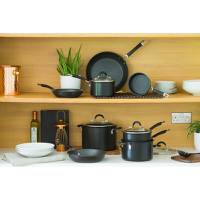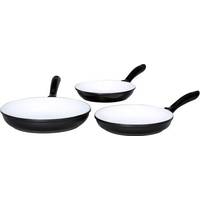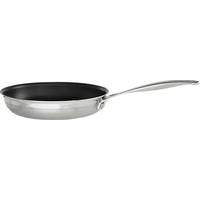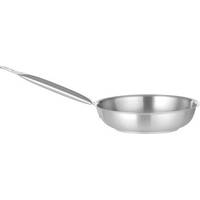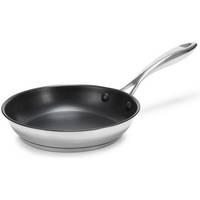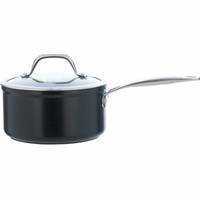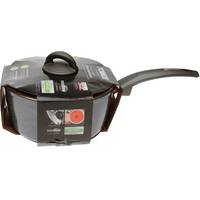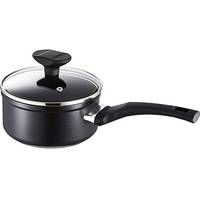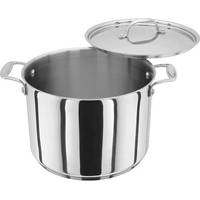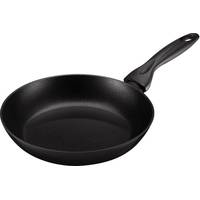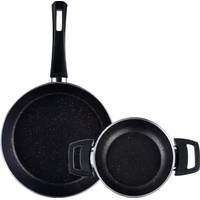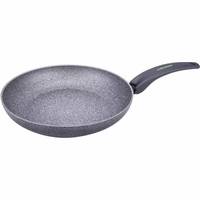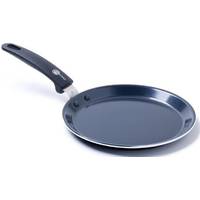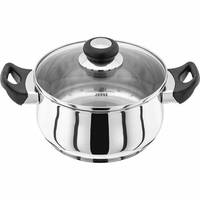Skottsberg Carbon Steel Wok
ColourBlack
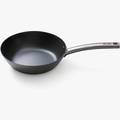
Size
Any Size
24cm
28cm
1 Stores
- Colour: Black
- Size: 24cm
- In Stock
- New
Description
Cook, fry, grill and roast in this Skottsberg steel-plate pan, which can withstand very high temperatures on the hob or in the oven. Strong, robust and built to last, this pan is a durable alternative to synthetic non-stick layers. This pan has undergone a heat treatment which makes the metal more rust-proof, scratch-resistant and stronger. You can even use metal utensils on this carbon steel pan. The pan is pre-seasoned with vegetable oil, creating a natural anti-adhesive layer (patina layer), which improves a little after each use. Using and caring for your Skottsberg pan: Before the first use, wash the pan with only hot water and a dishwashing brush. The pan is already pre-seasoned in the factory with vegetable oil, so you can use the pan immediately. To prevent food from sticking to the bottom, take food out of the refrigerator beforehand so that it is at room temperature Let the pan warm up slowly, and don't add fat until the pan is warm. Use a low cooking setting as this pan heats up quickly Dab the food to be prepared dry as much as possible Gently fry food for a while, without trying to pull it off the bottom. If necessary, turn down the stove and wait a while. You will see that it loosens by itself Use some extra fat the first time you prepare it as some (especially protein-rich) foods can stick to the bottom a little easier with new pans Sheet steel pans become hot during preparation so have an oven glove at hand After preparation let the pan cool down. Make sure that your hot pan is not placed directly under or in cold water. This can cause warping. When the pan has cooled down sufficiently, clean it with warm water and a dishwashing brush or scratch-free scouring sponge. Use as little detergent as possible because it often contains acid that can damage the patina layer, or cause rust. Never put the pan in the dishwasher For deeper cleaning, you can bring the pan to the boil with a small layer of water. Let it cool down and remove the residue with a dishwashing brush, spatula, spoon or use the special Skottsberg scrub mat. Another way is to use salt, as a kind of abrasive. Just throw a few tablespoons of table salt in the still warm pan and scrub thoroughly with kitchen paper or a potato cut in half. This doesn't affect the patina layer, but it does scrape away the cooked food remains After cleaning you can grease the pan with a very thin layer of oil (but not olive oil or nut oil) and rub it out with a paper kitchen towel. This helps against rust. Store the pan in a dry room. If you store the pan with lid, place a paper kitchen cloth between the pan and lid to allow air to circulate. Do this also if you put several pans on top of each other If a metallic taste develops, the pan gives off a lot of black (which is not harmful), or there are signs of rust or wear and tear of the patina layer on the pan, follow these simple steps to re-apply the pan with a protective layer: -If there is rust on your pan, first remove it with a scouring sponge, fine sandpaper or steel wool. An old cloth soaked in vinegar can also be used to remove rust stains. -Wash the pan in very hot water with dishwashing detergent and a dishwashing brush or scouring sponge and wipe dry. -Heat the pan for a few minutes on the stove on a low setting. This opens the pores of the pan, and ensures that the pan is completely dry. -Sprinkle oil on a lint-free cloth and rub the pan thoroughly (do not use olive oil or nut oil), inside and outside, and if the handle/handle is also made of iron or steel, rub it with the oil. -Very important: Remove the oil from the pan with a clean, lint-free cloth. It then seems that there is no more oil on the pan, but a thin film of oil remains on the pan, exactly what is needed. -Place the pan on the stove. Turn on the stove hood and make sure there is good ventilation in the kitchen. Heat the pan on the stove until the smoking point is reached, and the oil starts to smoke a little. Wait a few more minutes, and turn the stove off. The burning oil causes a smell. This is completely normal. -When the pan has cooled down completely, you can store the pan in a dry place. The more often you season the pan, or the more often you use the pan, the better your patina layer in the pan becomes. Provided the seasoning is done in the way described above, you can use almost all natural oil varieties. Best not use cold-pressed olive oil, nut oil (because of nut allergies), fats in solid form, or boiled linseed oil. You can use all kitchen accessories, including metal utensils Do not store food in your steel pan. There may be changes in the taste or colour of the food and if the food is kept in the pan for a long time, it may attack the patina layer or the pan may rust. Also, if you cook with ingredients that contain acid, such as tomatoes, wine or lemon, and your patina layer is not yet strong enough, it may attack this layer. If this happens, just season the pan quickly according to the above method.
You may also like
Discover more











![FORGECROSS Black Marble Forged Aluminium Pots & Pans[28Cm Frying Pan [514795]] from Wayfair](https://i.dealdoodle.co.uk/images/e/l3h44oABZ3KkuGabZYoI.jpg)





























